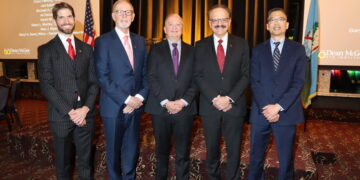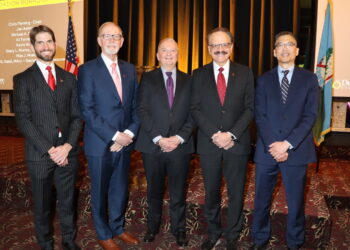STILLWATER, Okla. (OBV) – An Oklahoma State University study found that the lack of accessibility to affordable childcare is still hurting workforce participation in Oklahoma.
The study is titled “Oklahoma WorkTrends,” and it was produced by a team of researchers comprised of both faculty members and students. The study defines workforce development and examines conditions that impact the state’s workforce.
“Most people can agree that Oklahoma needs to develop its workforce and that finding good talent is difficult, but ‘workforce development’ is often used as a catch-all term,” the 48-page study states. “The goal of this report is to unpack workforce development by identifying what it specifically looks like, how to do it and who is responsible for it.”

Abbey Davis, a Ph. D and the director of the Center for the Future of Work at OSU, and Stephanie Phipps, a Ph. D and an assistant professor of professional practice in management, were part of the team behind the study. Davis was principal investigator, and Phipps was research faculty.
Davis and Phipps spoke with Oklahoma Business Voice about their goals in producing the study as well as their methodology. Davis described the first step of the study.
“We wanted to a provide a definition of workforce development because that’s a term that’s thrown around a lot, but I don’t know if everyone actually understands what that means,” Davis said. “And so we rely on a definition that really talks about the coordination of both public and private sector policies and programs that come together to help individuals advance in their careers and their livelihood. And so the report really focuses on who all contributes and plays a role in workforce development.”
The study’s second step involved exploring the direct and indirect effects that impact workforce development, which includes a range of outside factors.
“We really dive into things like poverty, incarceration rates, disability status, because in some way, shape or form, a lot of those are barriers to people being able to participate in the workforce. So that’s a big component of it,” Davis said.
The team conducted much of the study through social media in pursuit of responses from different demographics within Oklahoma’s workforce.

The team received more than 1,100 responses. Most of the respondents were full-time workers and some were part-time workers. The team culled the data to ensure that only responses from real individuals were included. The team ended up with a little over 750 legitimate responses, according to Phipps.
The study examined the following three workforce-related areas:
- Where has Oklahoma seen workforce progress from the standpoint of, “Who’s in the workforce and how do those individuals feel about being in our workforce today?”
- In what workforce areas has Oklahoma made improvements, and in which areas should focus not be taken away?
- Which workforce areas are not seeing improvement, and how can Oklahoma compete for employees across state boundaries?
“The Oklahoma labor force participation rate is at about 62.5 percent, which is basically the same as the national average,” Phipps said.
In addition to the surveys conducted through social media, the team also utilized third-party data sources, such as the U.S. Census Bureau.
The OSU researchers found that improvements in Oklahoma’s workforce participation include high participation among veterans. They also found improvement in post-secondary education, according to Phipps.
However, the poverty rate in the state requires greater focus, according to Phipps. The poverty rate, she said, is “way too high.”
Accessibility to affordable childcare – a struggle experienced by many working parents across Oklahoma and throughout the nation – is an area that needs continued focus in the ongoing effort to improve workforce development. It continues to be a drawback for working mothers especially, Phipps said.
“So, finding access to affordable childcare – even though we’ve seen an improvement there – there still isn’t the progress that we need or there still is not the [childcare] facilities to make up the difference for the need,” she said. “We’ve seen some laws that have been put in place to help with that, but there’s still a lot of improvement needed so that there’s access to that as a second employment opportunity.”
House Bill 2452, written by Rep. Suzanne Schreiber, R-Tulsa, succeeded in the Oklahoma Legislature last year and was signed into law by Gov. Kevin Stitt. The bill streamlines Oklahoma’s family childcare home licensing regulations to help daycares and other such facilities stay open, which ensures greater childcare availability for Oklahomans. It was a key bill in the legislative effort to expand childcare and get more parents back into the state’s workforce.
Davis referenced the latest childcare legislation, House Bill 4147, written by Schreiber and Rep. Mark Lawson, R-Sapulpa. That bill offers a 30 percent tax credit to employers who share in their employees’ childcare costs. The credit is capped at $30,000 per year, per employer.
“I don’t think we’re going to see the needle get moved as far as it needs to on access to affordable childcare until employers get involved,” Davis said. “So, I think the tax incentives for employers to offer reimbursement or to find a way to offer childcare to their employees is going to be the biggest thing that’s going to help move the needle.”
“Oklahoma WorkTrends” in its entirety is shared below:

















